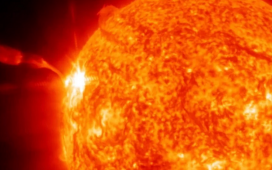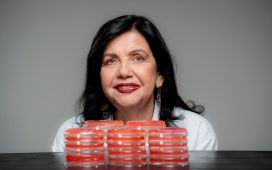Germany balks at funding CERN’s proposed future circular collider
THE proposal for CERN’s new underground particle collider, called the Future Circular Collider (FCC), is facing a serious challenge after Eckart Lilienthal of Germany’s Federal Ministry of Education and Research (BMBF) said at a workshop for particle physicists in Bonn on May 23 that Germany, a major contributor (about 20 per cent) to CERN’s annual budget of €267 million ($290 million), could not afford to spend more.
CERN is currently engaged in preparing its detailed feasibility study for the first stage of the 91-km circular particle accelerator whose chief aim is to mass produce the Higgs boson, the particle that gives mass to all matter and was discovered in 2012 at CERN’s Large Hadron Collider (LHC). The “Higgs Factory” FCC would dwarf the LHC.
The FCC’s first stage, called FCC-ee, will be a machine that will smash electrons head-on with positrons, the antiparticle version of electrons. The estimated cost of this is about 15 billion Swiss francs ($17 billion), and the time frame for its completion is the mid-2040s. CERN said in February that the indications of the initial phase of that study, which dealt with the technical aspects of the collider, were very positive.
But the BMBF is not so sure. “The preliminary cost estimates for the FCC-ee are subject to a large number of uncertainties, the effects of which are still largely unknown,” a BMBF spokesperson was quoted recently as saying by Nature. “The financing plan is extremely vague and requires a high level of commitment from external partners, which is neither assured nor even in prospect at the present time. Given these conditions, Germany cannot support funding of the project at this point.”
Also Read | Beaming success
Rosatom Director Alexey Likhachev and AEC Chairman Ajit Kumar Mohanty when they visited the construction site of the world’s first IV generation energy complex in Seversk in May.
| Photo Credit:
Rosatom
Russian scientists develop new technology for nuclear fuel peprocessing
RUSSIAN scientists from Rosatom’s Fuel Division and the Proryv (Breakthrough) Project have developed innovative technology for the purification and separation of nuclear materials from irradiated nuclear fuel. This project comprises a number of initiatives that demonstrate the possibility of closing the nuclear fuel cycle using fast neutron reactors, such as India’s upcoming Prototype Fast Breeder Reactor (PFBR).
Rosatom proposes to implement this new “crystallisation refining technology” to reprocess irradiated high-density uranium-plutonium nitride fuel (SNUP) as part of its pilot demonstration power complex (ODEK, Opitno Demonstratsionovo Energo-Kompleks). The PFBR, however, uses a mixed uranium-plutonium oxide fuel.
The ODEK project is being built at the Siberian Chemical Combine (SCC) in Seversk. In May, an Indian delegation led by Ajit Kumar Mohanty, Chairman of India’s Atomic Energy Commission (AEC), visited the complex. The complex is based on the Brest-OD-300 lead-cooled fast reactor supported by a module for fabrication and refabrication of nuclear fuel (MFR) and a module for reprocessing irradiated fuel. The reactor is scheduled for grid connection in 2027, the MFR is to be commissioned this year, and construction of the reprocessing unit is planned for 2025-26, with commissioning in 2030.
The scientists believe that this new crystallisation section will become the final technological stage in the chain of purification of nuclear materials isolated from irradiated SNUP fuel: uranium, plutonium, and neptunium. According to Rosatom, this technology will ensure a high level of safety during used fuel reprocessing. The process will allow for the joint purification and separation of uranium, plutonium, and neptunium, eliminating the possibility of isolating plutonium as a separate product. Materials extracted from the used fuel, after processing, will be sent for refabrication (and recycling) to produce fresh fuel. Thus, according to Rosatom, this system will gradually become almost autonomous and independent of external energy supplies.
Unlike other extraction technologies for purification of nuclear materials, crystallisation results in the production of a smaller volume of secondary waste, in part by using only nitric acid solutions as reagents. This technology will improve the environmental safety of used fuel reprocessing, said Rosatom.
Also Read | Malaria vaccine trials in Africa confirm high efficacy
A schematic of the SARS-COV-2, the virus that causes COVID-19.
| Photo Credit:
The Journal of the American Medical Association
WHO and global health agencies agree on new terminology for airborne pathogens
FOLLOWING a multi-year global consultation among public health agencies, a new and uniform terminology has emerged for all pathogens such as SARS-CoV-2 that can spread through the air and cause respiratory infections such as COVID-19, influenza, measles, Middle East respiratory syndrome, severe acute respiratory syndrome, and tuberculosis.
This consultation between the WHO and four major public health agencies—Africa Centres for Disease Control and Prevention, Chinese Center for Disease Control and Prevention, European Centre for Disease Prevention and Control, and US Centers for Disease Control and Prevention—has resulted in a report titled “Global technical consultation report on proposed terminology for pathogens that transmit through the air”.
The terminology varies across disciplines, and this has been the case for decades, notes the WHO. However, the report says, “during the coronavirus disease (COVID-19) pandemic, the terms ‘airborne’, ‘airborne transmission’ and ‘aerosol transmission’ were used in different ways by stakeholders in different scientific disciplines, which may have contributed to misleading information and confusion about how pathogens are transmitted in human populations”.
Following the extensive discussions held in 2021-23, the following common descriptors to characterise the transmission of pathogens through the air (under typical circumstances) has now been arrived at by consensus:
Individuals infected with a respiratory pathogen can generate and expel infectious particles containing the pathogen through their mouth or nose by breathing, talking, singing, spitting, coughing, or sneezing. These particles should be described with the term “infectious respiratory particles”, or IRPs. And “IRPs exist on a continuous spectrum of sizes, and no single cut off points should be applied to distinguish smaller from larger particles”. This facilitates the moving away from the dichotomy of previously used terms “‘aerosols’ (generally smaller particles) and ‘droplets’ (generally larger particles)”.











